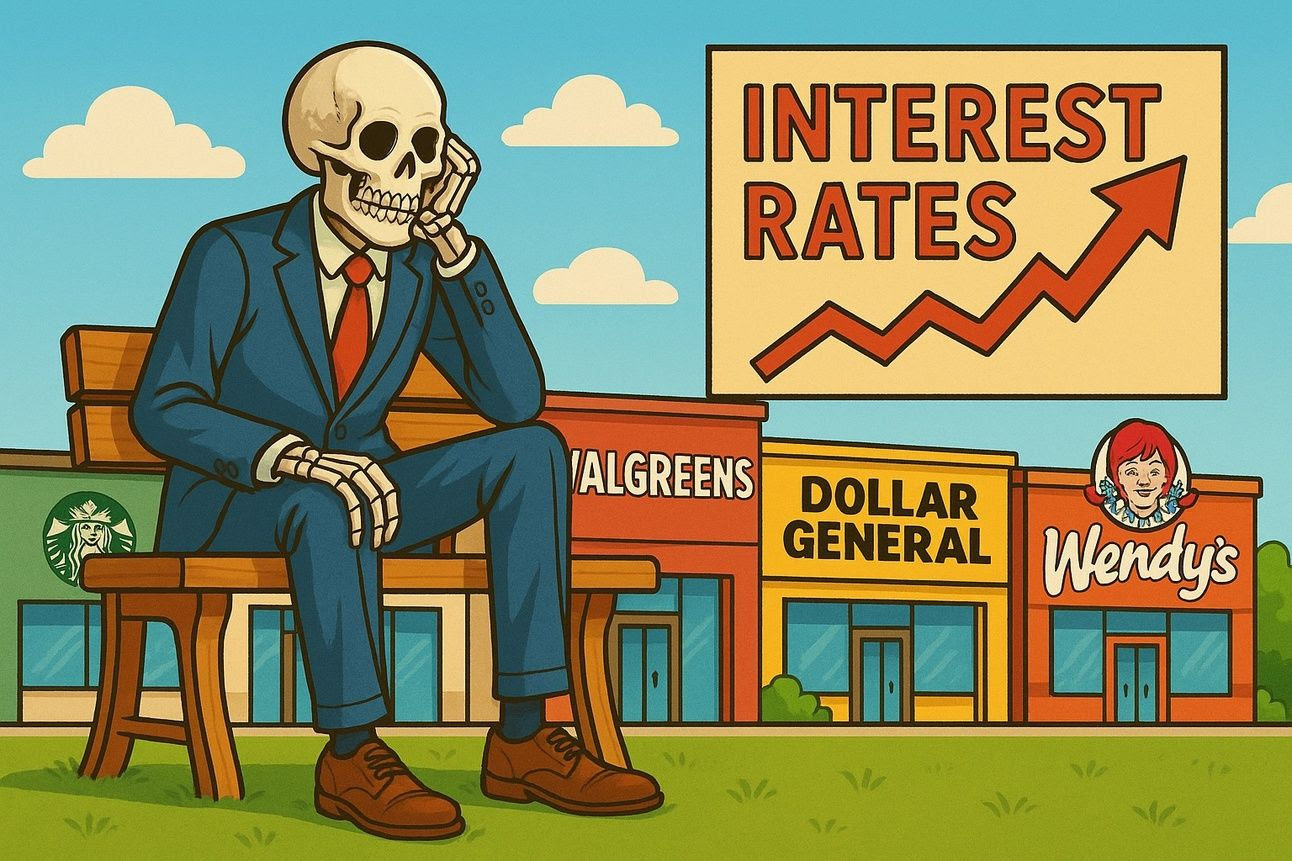Timing the Market?

This month the Federal Reserve made a unanimous decision to keep rates steady and reiterated they are taking a “wait-and-see” approach as unpredictable economic headwinds from tariffs could raise inflation and complicate policy decisions. The Fed also updated its economic projections forecasting weaker growth (~1.4% GDP), higher inflation (~3.0%), and the unemployment rate around 4.5% by year-end. Not a great signal for those expecting multiple rate reductions in 2025. Some are saying there will not be any reduction by the Fed for the remainder of 2025. Some are saying we will see two rate reductions totaling 50-75 basis points. Who knows? The better question is who cares? We need to work within the environment in which we currently find ourselves, not the environment we hope to exist at some point in the future.
I’ve heard many brokers and investors saying that Cap Rates will come down as soon as interest rates drop. Nothing could be further from the truth. Brokers advising their clients that they can deliver better pricing and investors waiting on this false promise will get a first hand look at how this “wait-and-see” approach works out for them. Hint: it won’t.
Why Cap Rates Will Not Drop as Soon as Interest Rates Drop
In our opinion, there are two distinct reasons this won’t happen. As you may recall, we have previously stated that when the market is going up (Cap Rates going down), sellers get smarter faster than buyers and when the market is going down (Cap Rates going up), buyers get smarter faster than sellers. Well, Cap Rates have been rising slowly but steadily over the past couple years. As anticipated, there was a long lag between the rapid rise in interest rates and the upward adjustment of Cap Rates. You can expect the exact same phenomenon to happen when (if) interest rates are lowered.
- Buyers will not immediately leap to pay more aggressive prices just because interest rates drop. It will not happen. What will happen is that the benefit of an interest rate drop (if any) will completely accrue to buyers in the form of increased net yields. They are just now getting used to seeing more favorable pricing from their standpoint and basic psychology tells us that this type of conditioning is not easily defeated.
- There is way too much inventory on the market which is pushing Cap Rates even higher. Need to sell your Starbucks today? You are competing with about 200 other Starbucks deals on the market. The first person to sell either 1) has what is clearly the very best one on the market (think AAA+ real estate, 15 year lease, strong increases, large parcel, major MSA in-fill corner); or 2) Adjust the offering Cap Rate up a bit higher than the competition to grab the attention of the next buyer (the first seller to do this is the smartest seller in the market btw - they get out a for a bit less than they had hoped while the competition chases the market down - you don’t want to be last to this party). This is the beginning of a death spiral that has just set the ceiling for everyone else. The process repeats until the inventory is sold - all while Cap Rates rise along the way.
In summary, Cap Rates are not going down anytime soon. It is going to take a lot more than a 50-75 basis point reduction in interest rates to overcome current market momentum. The inventory needs to be consumed before sellers will have the leverage to raise prices and shift the benefit of reduced rates to accrue to their favor.
Any investment expert will tell you that timing the market never works. It may appear to work but that’s just luck. CRE pros need to operate in the world as it exists now. That means deep dives to understand every aspect of your assets so you can position them properly and in a manner that will obtain the highest achievable price for that particular asset today, not the price a similar asset obtained years ago.



